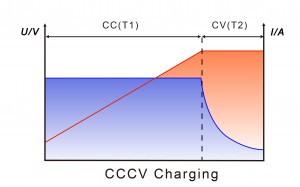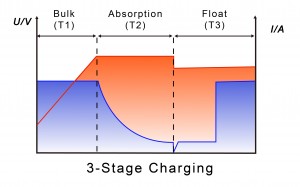Introduction
How to Safely Charge a LiFePO4 Battery? LiFePO4 batteries have gained significant attention due to their high safety, long cycle life, and high energy density. This article aims to provide you with a comprehensive guide on how to charge LiFePO4 batteries safely and efficiently to ensure optimal performance and longevity.
What is LiFePO4?
LiFePO4 batteries are composed of lithium (Li), iron (Fe), phosphorus (P), and oxygen (O). This chemical composition provides them with high safety and stability, especially under high temperatures or overcharging conditions.
Advantages of LiFePO4 Batteries
LiFePO4 batteries are favored for their high safety, long cycle life (often exceeding 2000 cycles), high energy density, and environmental friendliness. Compared to other lithium-ion batteries, LiFePO4 batteries have a lower self-discharge rate and require less maintenance.
Charging Methods for LiFePO4 Batteries
Solar Charging
Solar charging LiFePO4 batteries is a sustainable and eco-friendly method. Utilizing a solar charge controller helps efficiently manage the energy produced by solar panels, regulate the charging process, and ensure maximum energy transfer to the LiFePO4 battery. This application is well-suited for off-grid setups, remote areas, and green energy solutions.
AC Power Charging
Charging LiFePO4 batteries using AC power offers flexibility and reliability. To optimize charging with AC power, it’s recommended to use a hybrid inverter. This inverter integrates not only a solar charge controller but also an AC charger, allowing the battery to be charged from both a generator and the grid simultaneously.
DC-DC Charger Charging
For mobile applications like RVs or trucks, a DC-DC charger connected to the vehicle’s AC alternator can be used to charge LiFePO4 batteries. This method ensures a stable power supply for the vehicle’s electrical system and auxiliary equipment. Choosing a DC-DC charger compatible with the vehicle’s electrical system is crucial for charging efficiency and battery longevity. Additionally, regular checks of the charger and battery connections are essential to ensure safe and efficient charging.
Charging Algorithms and Curves for LiFePO4
LiFePO4 Charging Curve
It is generally recommended to use the CCCV (constant current-constant voltage) charging technique for LiFePO4 battery packs. This charging method comprises two stages: constant current charging (bulk charging) and constant voltage charging (absorption charging). Unlike sealed lead-acid batteries, LiFePO4 batteries do not require a float charging stage due to their lower self-discharge rate.

Sealed Lead-Acid (SLA) Battery Charging Curve
Sealed lead-acid batteries typically use a three-stage charging algorithm: constant current, constant voltage, and float. In contrast, LiFePO4 batteries do not require a float stage as their self-discharge rate is lower.
Charging Characteristics and Settings
Voltage and Current Settings During Charging
During the charging process, setting the voltage and current correctly is crucial. Based on the battery capacity and manufacturer’s specifications, it’s generally recommended to charge within a current range of 0.5C to 1C.
LiFePO4 Charging Voltage Table
| System Voltage |
Bulk Voltage |
Absorption Voltage |
Absorption Time |
Float Voltage |
Low Voltage Cut-off |
High Voltage Cut-off |
| 12V |
14V – 14.6V |
14V – 14.6V |
0-6 minutes |
13.8V ± 0.2V |
10V |
14.6V |
| 24V |
28V – 29.2V |
28V – 29.2V |
0-6 minutes |
27.6V ± 0.2V |
20V |
29.2V |
| 48V |
56V – 58.4V |
56V – 58.4V |
0-6 minutes |
55.2V ± 0.2V |
40V |
58.4V |
Float Charging LiFePO4 Batteries?
In practical applications, a common question arises: do LiFePO4 batteries need float charging? If your charger is connected to a load and you want the charger to prioritize powering the load rather than depleting the LiFePO4 battery, you can maintain the battery at a specific State of Charge (SOC) level by setting a float voltage (e.g., keeping it at 13.30 volts when charged to 80%).

Charging Safety Recommendations and Tips
Recommendations for Parallel Charging LiFePO4
- Ensure the batteries are of the same brand, type, and size.
- When connecting LiFePO4 batteries in parallel, ensure the voltage difference between each battery does not exceed 0.1V.
- Ensure all cable lengths and connector sizes are the same to ensure consistent internal resistance.
- When charging batteries in parallel, the charging current from solar energy is halved, while the maximum charging capacity doubles.
Recommendations for Series Charging LiFePO4
- Before series charging, ensure each battery is of the same type, brand, and capacity.
- When connecting LiFePO4 batteries in series, ensure the voltage difference between each battery does not exceed 50mV (0.05V).
- If there is battery imbalance, where any battery’s voltage differs by more than 50mV (0.05V) from the others, each battery should be charged separately to rebalance.
Safe Charging Recommendations for LiFePO4
- Avoid Overcharging and Over-Discharging: To prevent premature battery failure, it’s unnecessary to fully charge or fully discharge LiFePO4 batteries. Maintaining the battery between 20% and 80% SOC (State of Charge) is best practice, reducing battery stress and extending its lifespan.
- Choose the Right Charger: Select a charger specifically designed for LiFePO4 batteries to ensure compatibility and optimal charging performance. Prioritize chargers with constant current and constant voltage charging capabilities for more stable and efficient charging.
Safety Precautions During Charging
- Understand the Safety Specifications of Charging Equipment: Always ensure the charging voltage and current are within the range recommended by the battery manufacturer. Use chargers with multiple safety protections, such as overcurrent protection, overheating protection, and short-circuit protection.
- Avoid Mechanical Damage During Charging: Ensure the charging connections are secure, and avoid physical damage to the charger and battery, such as dropping, squeezing, or over-bending.
- Avoid Charging in High Temperature or Humid Conditions: High temperatures and humid environments can damage the battery and reduce charging efficiency.
Choosing the Right Charger
- How to Choose a Charger Suitable for LiFePO4 Batteries: Choose a charger with constant current and constant voltage charging capabilities, and adjustable current and voltage. Considering your application requirements, select an appropriate charging rate, typically within the range of 0.5C to 1C.
- Matching Charger Current and Voltage: Ensure the output current and voltage of the charger match the recommendations of the battery manufacturer. Use chargers with current and voltage display functions so you can monitor the charging process in real-time.
Best Practices for Maintaining LiFePO4 Batteries
- Regularly Check Battery Status and Charging Equipment: Periodically check the battery voltage, temperature, and appearance, and ensure the charging equipment is functioning properly. Inspect battery connectors and insulation layers to ensure there is no wear or damage.
- Advice for Storing Batteries: When storing batteries for an extended period, it’s recommended to charge the battery to 50% capacity and store them in a dry, cool environment. Regularly check the battery charge level and recharge if necessary.
LiFePO4 Temperature Compensation
LiFePO4 batteries do not require voltage temperature compensation when charging at high or low temperatures. All LiFePO4 batteries are equipped with a built-in Battery Management System (BMS) that protects the battery from the effects of low and high temperatures.
Storage and Long-term Maintenance
Long-term Storage Recommendations
- Battery State of Charge: When storing LiFePO4 batteries for an extended period, it’s recommended to charge the battery to 50% capacity. This state can prevent the battery from being fully discharged and reduce charging stress, thereby extending battery life.
- Storage Environment: Choose a dry, cool environment for storage. Avoid exposing the battery to high temperatures or humid conditions, which can degrade battery performance and lifespan.
- Regular Charging: During long-term storage, it’s recommended to perform a maintenance charge on the battery every 3-6 months to maintain battery charge and health.
Replacing Sealed Lead-Acid Batteries with LiFePO4 Batteries in Float Applications
- Self-discharge Rate: LiFePO4 batteries have a lower self-discharge rate, meaning they lose less charge during storage. Compared to sealed lead-acid batteries, they are better suited for long-term float applications.
- Cycle Life: The cycle life of LiFePO4 batteries is typically longer than that of sealed lead-acid batteries, making them an ideal choice for applications that require a more reliable and durable power source.
- Performance Stability: Compared to sealed lead-acid batteries, LiFePO4 batteries exhibit more stable performance under different temperature and environmental conditions, making them excellent for various applications, especially in environments requiring high efficiency and reliability.
- Cost-effectiveness: While the initial cost of LiFePO4 batteries may be higher, considering their long lifespan and low maintenance requirements, they are generally more cost-effective in the long run.
Common Questions about Charging LiFePO4 Batteries
- Can I directly charge the battery with a solar panel?
It’s not recommended to directly charge the battery with a solar panel, as the output voltage and current of the solar panel can vary with sunlight intensity and angle, which may exceed the charging range of the LiFePO4 battery, leading to overcharging or undercharging, affecting battery performance and lifespan.
- Can a sealed lead-acid charger charge LiFePO4 batteries?
Yes, sealed lead-acid chargers can be used to charge LiFePO4 batteries. However, it’s essential to ensure the voltage and current settings are correct to avoid potential battery damage.
- How many amps do I need to charge a LiFePO4 battery?
The charging current should be within a range of 0.5C to 1C based on the battery capacity and manufacturer’s recommendations. For example, for a 100Ah LiFePO4 battery, the recommended charging current range is 50A to 100A.
- How long does it take to charge a LiFePO4 battery?
The charging time depends on the battery capacity, charging rate, and charging method. Generally, using the recommended charging current, charging time can range from a few hours to several tens of hours.
- Can I use a sealed lead-acid charger to charge LiFePO4 batteries?
Yes, as long as the voltage and current settings are correct, sealed lead-acid chargers can be used to charge LiFePO4 batteries. However, it’s crucial to carefully read the charging guidelines provided by the battery manufacturer before charging.
- What should I pay attention to during the charging process?
During the charging process, besides ensuring the voltage and current settings are correct, closely monitor the battery’s status, such as State of Charge (SOC) and State of Health (SOH). Avoiding overcharging and over-discharging is crucial for the battery’s lifespan and safety.
- Do LiFePO4 batteries need temperature compensation?
LiFePO4 batteries do not require voltage temperature compensation when charging at high or low temperatures. All LiFePO4 batteries are equipped with a built-in Battery Management System (BMS) that protects the battery from the effects of low and high temperatures.
- How to charge LiFePO4 batteries safely?
The charging current depends on the battery’s capacity and manufacturer’s specifications. It’s generally recommended to use a charging current between 0.5C and 1C of the battery capacity. In parallel charging scenarios, the maximum charging capacity is cumulative, and the solar-generated charging current is evenly distributed, leading to a reduced charging rate for each battery. Therefore, adjustments based on the number of batteries involved and each battery’s specific requirements are essential.
Conclusion:
How to safely charge LiFePO4 batteries is a critical question that directly impacts battery performance, lifespan, and safety. By using the correct charging methods, following manufacturer recommendations, and maintaining the battery regularly, you can ensure the optimal performance and safety of LiFePO4 batteries. We hope this article has provided you with valuable information and practical guidance to better understand and use LiFePO4 batteries.